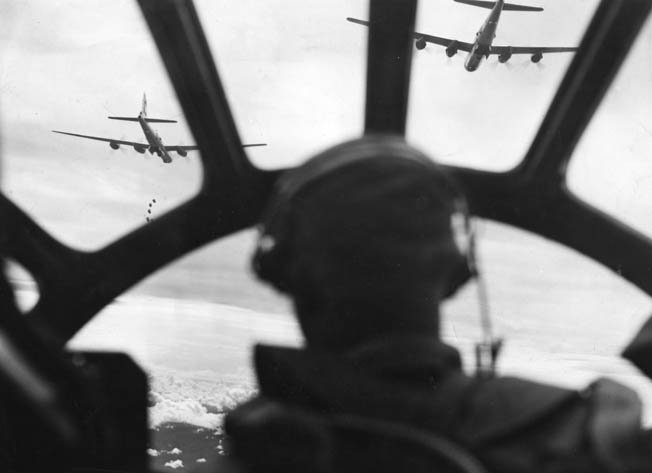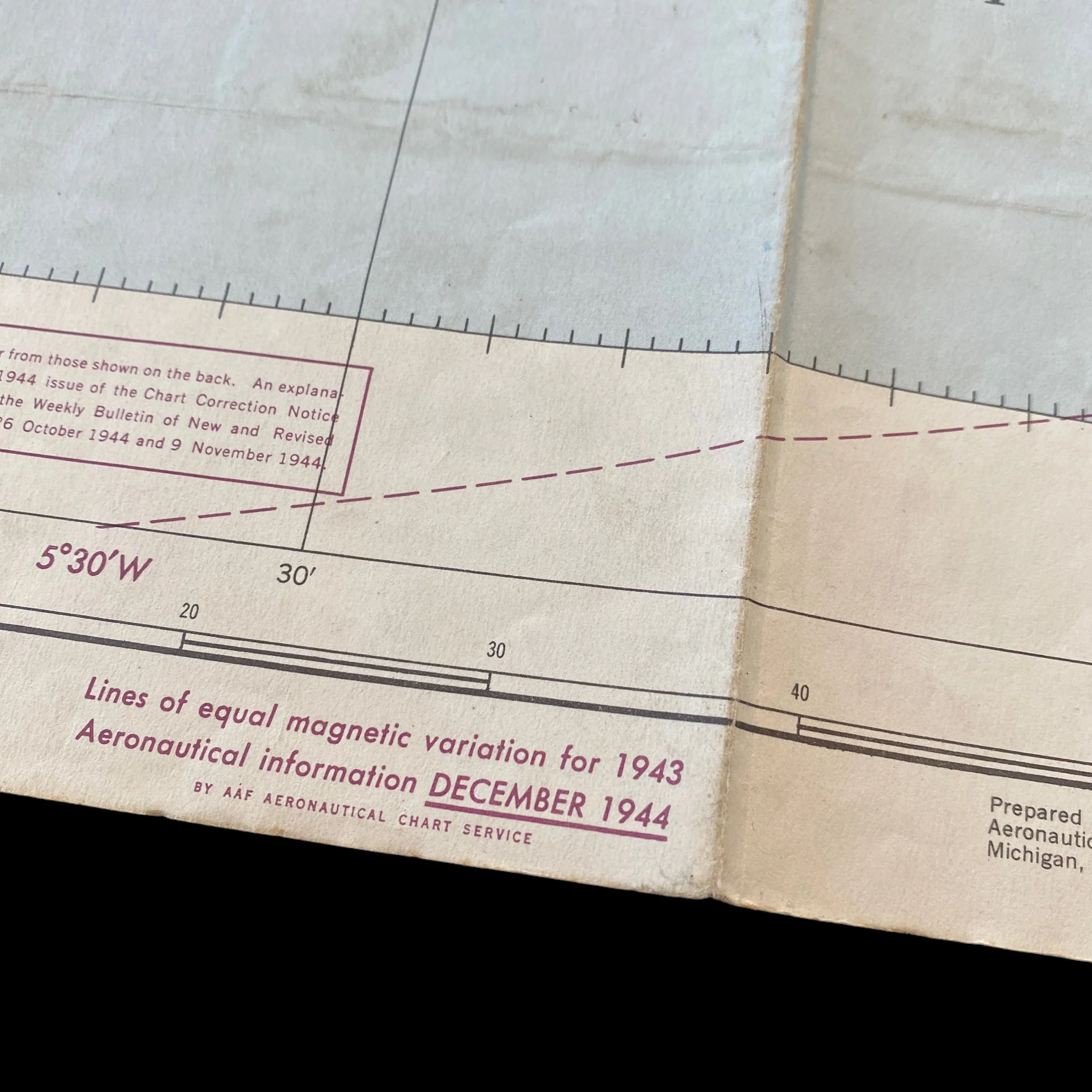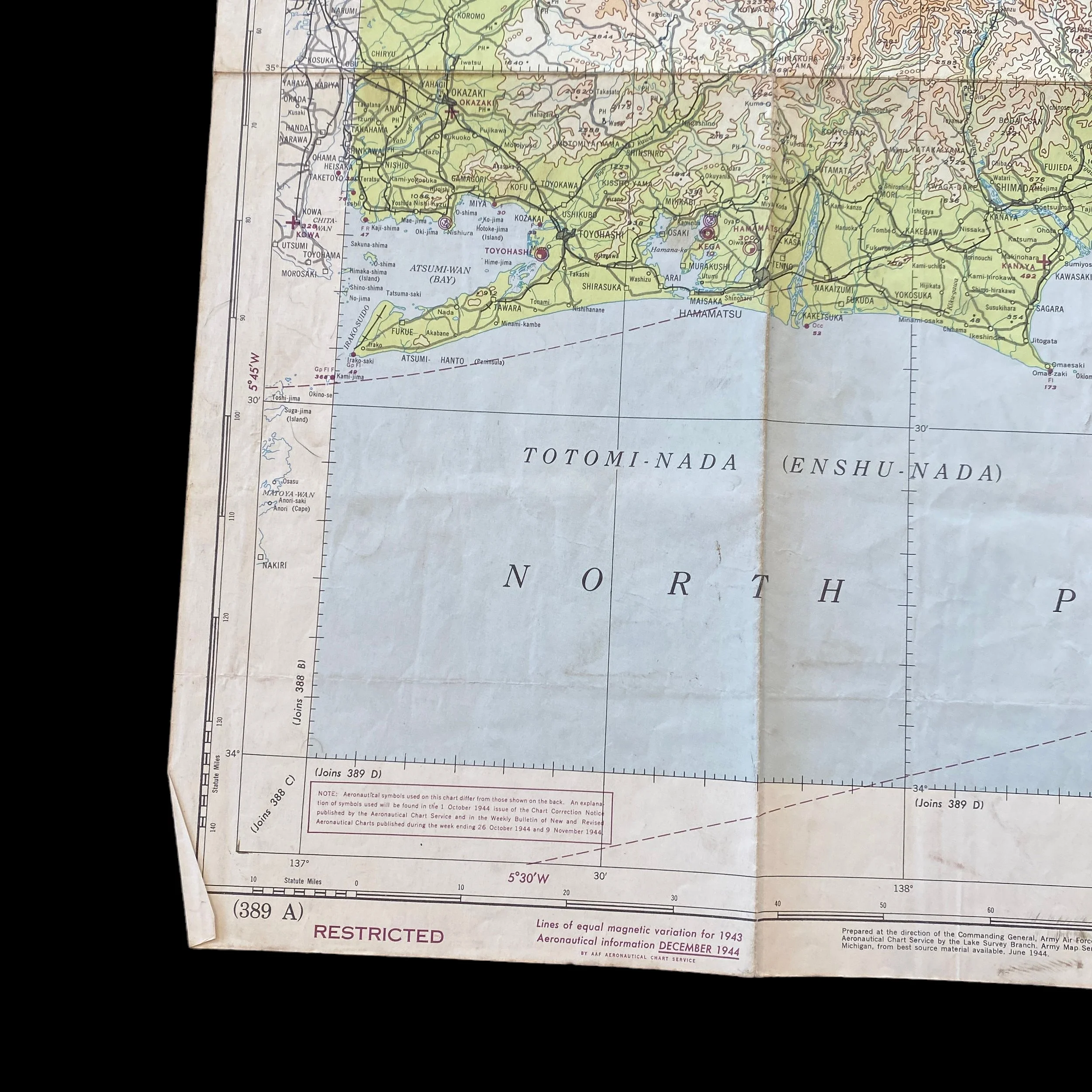RARE! 1944 WWII B-29 Superfortress Army Air Force Air Navigation Mission Map Tokyo Japan Missions (Mission Marked)




































RARE! 1944 WWII B-29 Superfortress Army Air Force Air Navigation Mission Map Tokyo Japan Missions (Mission Marked)
Comes with hand-signed C.O.A.
This incredible and rare museum-grade artifact is an original World War II combat map titled “AAF AERONAUTICAL MAP”. Dated 1944, this map of Tokyo was used by B-29 Superfortresses and the mainland bombing of Japan and the main capital of Tokyo. WWII maps marked “RESTRICTED” were done so when they were used specifically in that combat sector and contained sensitive and confidential information. This aerial navigation map of Tokyo has hand-marked navigation marks from missions and include strategic mission location such as Tokyo, Nagoya, and Tokyo Bay where the surrender of Japan took place following the atomic bomb on Hiroshima and Nagasaki in 1945. This map is used by B 29 Superfortress navigators and pilots while navigating around this extremely crucial part of the mainland, Japan, on bombing missions in 1945.
The US aerial bombing missions by B-29s on Tokyo, Japan, from 1944 to 1945, were a crucial chapter in the Pacific Theater of World War II. The bombings inflicted massive destruction and loss of life on the Japanese capital, leading to significant strategic and psychological consequences. This essay will delve into the historical background of the bombing campaigns, the planning and execution of the missions, the impact on Tokyo, and the historical significance of the bombings.
Historical Background
By late 1943, the US military had gained air superiority over the Pacific, and the Joint Chiefs of Staff began considering a strategic bombing campaign against Japan. However, the distance between Japan and the US posed a logistical challenge, and the existing bombers lacked the range and payload capacity for sustained operations. To address this, the US Army Air Force (USAAF) developed the B-29 Superfortress, a long-range heavy bomber that could carry a ton of bombs and fly at high altitude, making it difficult for Japanese anti-aircraft defenses to hit.
The initial plan was to launch the bombing campaign from bases in China, but the Japanese invasion of China and the difficulty of securing airfields there forced the US to look elsewhere. The USAAF eventually identified the Mariana Islands, a group of Pacific islands about 1,500 miles from Tokyo, as suitable bases for the B-29s. The US launched a massive effort to build airfields, ports, and support infrastructure on the islands, known as the Marianas Turkey Shoot, and by November 1944, the first B-29s arrived.
Planning and Execution
The USAAF planned the bombing campaign in three phases. The first phase, known as Operation Matterhorn, was to be a series of precision daylight raids on Japan's industrial and military targets, particularly its aircraft factories, oil refineries, and naval bases. However, the B-29s faced numerous challenges, including bad weather, the lack of reliable navigation equipment, and the difficulty of hitting targets from high altitude. The raids also faced intense resistance from Japanese fighter planes and anti-aircraft fire, leading to high losses.
The second phase, which began in late 1944, was a switch to nighttime incendiary bombing, aimed at destroying Japan's wooden housing and infrastructure. The B-29s dropped incendiary bombs that created massive firestorms, particularly in Tokyo, where much of the city's buildings were made of wood and paper. The B-29s flew at low altitude to drop the bombs, exposing them to even more danger from anti-aircraft fire and Japanese fighter planes.
The third phase, known as Operation Downfall, was a planned invasion of Japan that would have involved a massive amphibious assault and ground invasion. However, the success of the bombing campaign and the eventual dropping of atomic bombs on Hiroshima and Nagasaki in August 1945 obviated the need for the invasion.
Impact on Tokyo
The US aerial bombing missions on Tokyo had a significant impact on the city and Japan as a whole. The incendiary bombing created massive firestorms that burned out vast swathes of the city, killing an estimated 100,000 people and leaving more than a million homeless. The destruction of factories and infrastructure crippled Japan's war effort, leading to a severe shortage of essential goods and materials. The bombings also shattered the Japanese people's morale and belief in their government's ability to protect them, leading to growing calls for surrender.